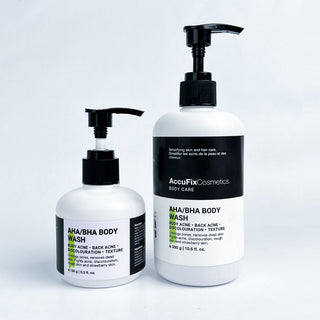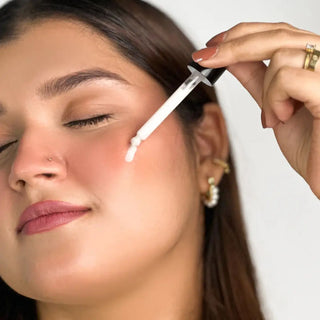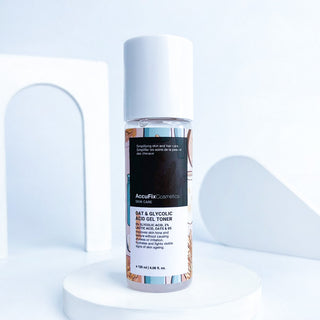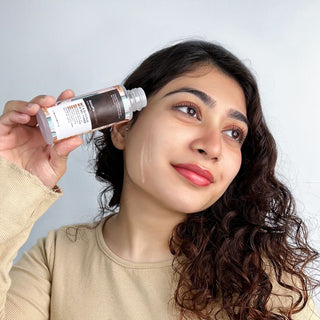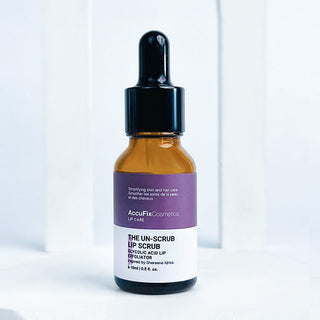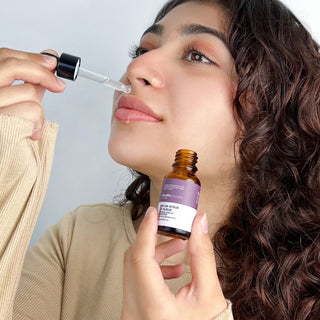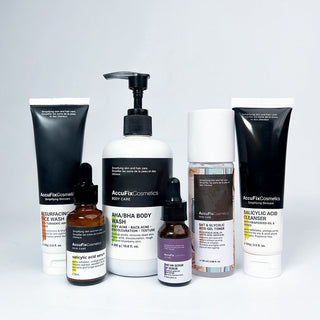
Glycolic Acid
Glycolic acid is an AHA (alpha hydroxy acid) that gently exfoliates the skin’s surface to remove dead cells, fade marks, and improve texture. It has the smallest molecular size among AHAs, allowing it to penetrate deeply and work fast—often showing visible results overnight. Whether you’re dealing with dullness, dark spots, or rough skin, glycolic acid helps reveal a brighter, smoother complexion with consistent use.
Benefits of Glycolic Acid
✔ Exfoliates dead skin to improve texture
✔ Fades dark spots, post-acne marks & sun damage
✔ Brightens dull skin for a more even tone
✔ Helps unclog pores and prevent breakouts
✔ Smooths rough patches and dry areas
✔ Boosts skin renewal for a fresher glow
This ingredient works best when paired with soothing and hydrating ingredients to maintain a healthy skin barrier.
How to use Glycolic Acid
✔ Start with 2–3 times a week at night.
✔ Apply after cleansing, in toner or serum form.
✔ Don’t mix with retinol or strong exfoliants in the same routine.
✔ Always follow with moisturizer.
✔ Use sunscreen daily—glycolic acid increases sun sensitivity.
Glycolic acid is effective but strong—so go slow, listen to your skin, and build tolerance over time.
Our Glycolic Acid Range
AHA/BHA Body Wash
Regular price from Rs.1,390 -7%
- Unit price
- /per
Salicylic Acid Cleanser
Regular price
Rs.1,695
Rs.1,575
-7%
- Unit price
- /per
Salicylic Acid Serum | BHA Serum
Regular price
Rs.2,095
Rs.1,950
-7%
- Unit price
- /per
Resurfacing Face Wash with turmeric & honey
Regular price
Rs.1,995
Rs.1,855
-7%
- Unit price
- /per
Oat and Glycolic Acid Gel Toner
Regular price
Rs.2,295
Rs.2,134
-7%
- Unit price
- /per
The Unscrub Lip Scrub with Glycolic Acid
Regular price
Rs.1,195
Rs.1,110
-7%
- Unit price
- /per
FAQs
If your skin builds tolerance, yes—but start with 2–3 times a week. Once your skin adjusts, daily use is fine for most people, especially in lower concentrations (7-10%) like our toner or Salicylic acid cleanser.
Glycolic acid works best for normal, oily, and combination skin. Dry or sensitive skin types should use it with caution and always follow with barrier-supporting hydration.
Yes, you can use glycolic acid and salicylic acid together, especially in a well-formulated cleanser or serum. Glycolic acid exfoliates the skin’s surface, while salicylic acid penetrates deep into pores to unclog them. This combination is highly effective for acne-prone, textured, or congested skin. However, if you have sensitive skin, start slowly to avoid irritation and always follow with a gentle moisturizer and sunscreen.
Yes, glycolic acid is safe for acne-prone skin. It gently exfoliates dead skin cells, unclogs pores, and improves texture, making it effective for treating breakouts and acne scars. When used in a face cleanser for acne-prone skin, especially with salicylic acid, it helps clear and smooth the skin without irritation.
No, glycolic acid is not antibacterial. It is an exfoliating alpha hydroxy acid (AHA) that helps remove dead skin cells, unclog pores, and improve skin texture. While it supports clearer skin, it does not kill acne-causing bacteria like salicylic acid or benzoyl peroxide.

